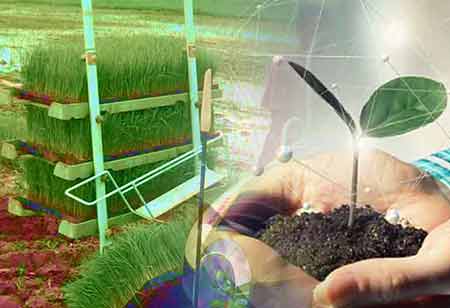Thank you for Subscribing to Agri Business Review Weekly Brief
A Smart Farming Application Of Edge Computing
The smart equipment can perform various tasks, like watering/weeding specific field areas

By
Agri Business Review | Tuesday, March 29, 2022
Stay ahead of the industry with exclusive feature stories on the top companies, expert insights and the latest news delivered straight to your inbox. Subscribe today.
Smart farming and agriculture can cover many applications, from tracking climate change to analyzing crop/cattle conditions to greenhouse automation and IoT to manage farms.
Fremont, CA: With smart farming technologies, the key chance the use cases of edge computing lie within the nominal “precision agriculture.” With this approach, farmers rely on data to gain better control over the business, optimize the efficiency of their operations, and, as a result, reduce operational expenses.
The smart equipment can perform various tasks, like watering/weeding specific field areas when needed or even autonomously harvesting crops.
Disaster protection
Agriculture IoT systems can make sensible decisions about potential environmental risks or natural disasters through edge computing.
Namely, remote sensors can gather and analyze data about changes in the weather or the environment to predict potential disasters and immediately notify the general control center in case of certain signs of danger. As a result, farmers can take timely measures to protect their crops, at least partially, in case of a wildfire.
Agribots
Autonomous tractors & robotic machinery can run on autopilot, communicating with close sensors to acquire the necessary data about the surrounding environment.
Through computer vision and pre-loaded field data, agribots can calculate the most effective paths to cover the required area taking into account the type of performed task, the number of vehicles present in the field, size of implements, etc. Also, they can reroute automatically in case of an unexpected obstacle or stop completely, for example, if a human or an animal is in the way.
Therefore, the smart equipment can perform various tasks, like watering/weeding specific field areas when needed or even autonomously harvesting crops.
Farm automation
Like agribots, a greenhouse or entire farm can be put on autopilot using IoT edge computing. This implies the closed ecosystem can take care of itself without relying on a remote server to process the collected data and make decisions about routine processes, e.g., watering the plants, feeding the cattle, managing the temperature, light, and humidity in the room, etc.
Regarding agribots, edge computing will allow the farm or greenhouse to operate regardless of the connection to the main server and make decisions locally, according to the data from local sensors. This has the potential to improve process reliability and reduce waste, making agriculture a more sustainable process.





